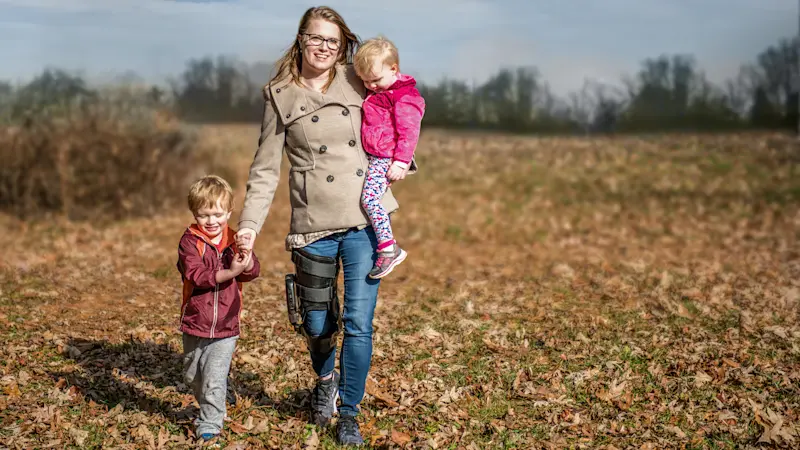Back pain
An appropriate combination of pain therapy, orthopaedic technology devices such as back orthoses, and physiotherapy often helps those who are affected by back pain.
Causes, symptoms and treatment
Back pain refers to painful conditions occurring in various areas of the back. Common causes of back pain are damage due to excessive strain or a combination of mechanical damage (for example, pinching of a nerve) and degenerative damage (signs of wear) along with psychosomatic factors.
Ottobock supports and orthoses

Causes
Back pain frequently has physical (organic) and/or psychosomatic causes along with malpositions and inappropriate biomechanical stresses. Possible causes include:
Injuries such as the fracture of a vertebral body, a vertebral body displacement or the tearing of a nerve root
Inflammation and
degeneration. Diagnoses include arthrosis, osteoporosis, ankylosing spondylitis (Bechterew’s disease), herniated discs, instability of the spine, muscle imbalances or a leg length difference that disrupts the statics.
No specific cause is found for 90 per cent of all cases of back pain. X-rays or magnetic resonance tomography are used to make a diagnosis.
Symptoms
Back pain is classified as radicular pain, in which a nerve root is irritated by a herniated disc, for instance, or as pseudoradicular pain. With the latter, back pain is caused by changes in the small joints of the spine.
Other possible distinguishing features include:
Lumbago: back pain that occurs suddenly
Chronic back pain: ongoing back pain for more than three months
Lower back pain and radiating pain in the legs
Loss of control over leg functions
Bladder dysfunction
Frequency
Women aged 30 to 60 are affected by back pain at a rate of 60 to 70 per cent, and even more men at 65 to 80 per cent. More than 75 per cent of all back pain occurs in the lumbar region. Back pain is the second most common cause of hospitalisation. It is the leading cause for inpatient medical treatment covered by pension insurance and for disability and incapacity for work. Nearly 50 per cent of all early retirement applications are due to back pain.
In Germany, 31 million cases of back pain are treated every year. Acute symptoms account for 87.5 per cent of the cases, while 12.5 per cent are chronic. The costs incurred due to back pain in Germany are estimated at around 49 billion euros. As a result, the treatment and rehabilitation of affected individuals isn’t just seen as an important medical task but also an economic factor!
Therapy
Treatment depends on the cause of the symptoms and often begins with conservative approaches – that is, without an operation. Surgery is only carried out in rare cases. The prognosis is good for most people with back pain. In more than half the cases, the pain goes away within one week. After two weeks, about 80 per cent of all cases have largely recovered due to appropriate treatment with pain therapy, orthopaedic technology devices such as back orthoses/supports and physiotherapy. The guidelines of the orthopaedic professional associations and the Drug Commission of the German Medical Association emphasise that only those measures that incorporate the patient’s active involvement (for example, active physiotherapy, the use of functional orthoses, back-friendly behaviour at work, and so on) are beneficial over the long term.
Back to everyday activities: three steps to an Ottobock orthosis
- Here you’ll find an overview of all the orthoses and supports that could potentially help you. Take the list with you to your next doctor’s appointment.
- Talk to your doctor about which orthosis is best suited to your symptoms and condition. Your doctor can then write you a prescription for the appropriate orthosis.
- Take your prescription to a medical supply company. They’ll give you your new orthosis and adjust it to fit your exact body measurements.
